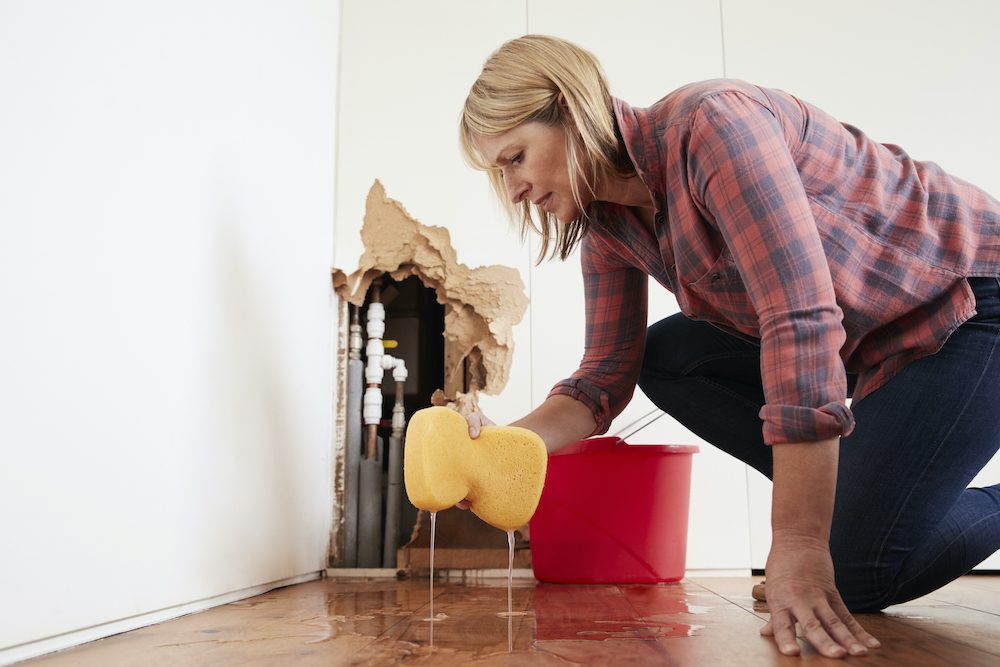How to Inspect If Your House Has a Concealed Leakage
How to Inspect If Your House Has a Concealed Leakage
Blog Article
This post which follows on the subject of Top leak detection hacks is extremely entertaining. Don't overlook it.

Early detection of leaking water lines can alleviate a possible disaster. Some small water leaks might not be noticeable.
1. Analyze the Water Meter
Every residence has a water meter. Inspecting it is a proven way that aids you discover leaks. For starters, turn off all the water resources. Make certain nobody will certainly flush, make use of the tap, shower, run the cleaning maker or dishwasher. From there, most likely to the meter and also watch if it will certainly alter. Because no one is using it, there should be no motions. If it moves, that suggests a fast-moving leakage. Also, if you detect no changes, wait an hour or more and also check back once again. This implies you might have a sluggish leak that can also be underground.
2. Check Water Consumption
If you identify sudden changes, in spite of your usage being the same, it means that you have leakages in your plumbing system. An unexpected spike in your costs suggests a fast-moving leak.
A steady rise every month, also with the exact same habits, reveals you have a sluggish leak that's likewise slowly rising. Call a plumber to completely inspect your property, specifically if you feel a warm area on your floor with piping below.
3. Do a Food Coloring Examination
When it comes to water consumption, 30% comes from commodes. If the color somehow infiltrates your dish throughout that time without flushing, there's a leakage between the tank as well as bowl.
4. Asses Outside Lines
Don't forget to inspect your outside water lines also. Needs to water permeate out of the link, you have a loosened rubber gasket. One small leakage can waste bunches of water and surge your water expense.
5. Assess the scenario and also check
Homeowners must make it a practice to inspect under the sink counters as well as also inside cupboards for any type of bad odor or mold development. These 2 warnings suggest a leak so timely attention is required. Doing regular examinations, also bi-annually, can save you from a major trouble.
If you recognize your house is currently old, keep a careful eye on your heating units, tubes, pipes and so on. Check for stainings as well as compromising as the majority of pipelines and also home appliances have a life expectancy. They will additionally normally deteriorate as a result of tear as well as wear. If you presume leaking water lines in your plumbing system, do not wait on it to rise. Call a professional plumber right away so you don't wind up with a terrible mess in your house.
Early discovery of dripping water lines can minimize a possible calamity. Some little water leakages might not be noticeable. Examining it is a surefire way that aids you find leaks. One small leak can throw away heaps of water as well as surge your water bill.
If you presume dripping water lines in your plumbing system, don't wait for it to intensify.
WARNING SIGNS OF WATER LEAKAGE BEHIND THE WALL
PERSISTENT MUSTY ODORS
As water slowly drips from a leaky pipe inside the wall, flooring and sheetrock stay damp and develop an odor similar to wet cardboard. It generates a musty smell that can help you find hidden leaks.
MOLD IN UNUSUAL AREAS
Mold usually grows in wet areas like kitchens, baths and laundry rooms. If you spot the stuff on walls or baseboards in other rooms of the house, it’s a good indicator of undetected water leaks.
STAINS THAT GROW
When mold thrives around a leaky pipe, it sometimes takes hold on the inside surface of the affected wall. A growing stain on otherwise clean sheetrock is often your sign of a hidden plumbing problem.
PEELING OR BUBBLING WALLPAPER / PAINT
This clue is easy to miss in rooms that don’t get much use. When you see wallpaper separating along seams or paint bubbling or flaking off the wall, blame sheetrock that stays wet because of an undetected leak.
BUCKLED CEILINGS AND STAINED FLOORS
If ceilings or floors in bathrooms, kitchens or laundry areas develop structural problems, don’t rule out constant damp inside the walls. Wet sheetrock can affect adjacent framing, flooring and ceilings.
https://www.servicemasterbyzaba.com/blog/how-to-detect-water-leakage-in-walls/

As an avid reader about Detecting hidden plumbing leaks, I was thinking sharing that piece of content was really helpful. Loved our content? Please share it. Help another person discover it. We appreciate reading our article about Finding hidden leaks.
Report this page